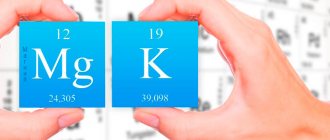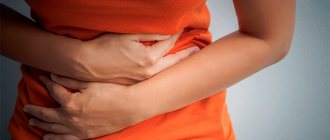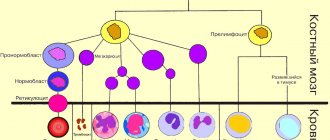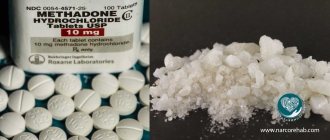Nowadays we hear the definition of “vegetative-vascular dystonia” everywhere.
Its owners are 80% of the population. Generally speaking, this condition occurs due to an imbalance in the functioning of the nervous system and includes about 150 symptoms. It requires an integrated approach to treatment, including medication. The drug Glycine for VSD has a fairly effective effect, since its main work is aimed at normalizing nervous processes. It is prescribed for almost every case of dystonia, but the intensity of the drug’s effects depends on the form of the condition and some other factors.
The essence of the process
It turns out that the list of the International Classification of Diseases does not include such a disease as vegetative-vascular dystonia. Therefore, it is classified as a symptom complex that can accompany many ailments.
VSD develops due to improper functioning of the autonomic nervous system, which regulates the functioning of internal organs, glands and blood vessels. When it fails, the activities of the listed structures are disrupted. Therefore, VSD is accompanied by such a wide range of symptoms:
- pain of varying localization and intensity. It is permanent;
- pain in the heart, palpitations;
- prostration;
- breathing disorder;
- cold extremities;
- sleep disturbance;
- dizziness and fainting;
- hand tremors;
- decrease or increase in pressure;
- digestive disorders;
- excessive sweating;
- bad mood, irritability, apathy and other mental disorders.
The autonomic nervous system consists of 2 divisions: sympathetic and parasympathetic. By their nature they are antagonists, that is, they perform opposite actions. If the sympathetic system increases the heartbeat, inhibits peristalsis and salivation, reduces the tone of the bladder, dilates the pupil and bronchi, then the parasympathetic system has the exact opposite effect. The parasympathetic division of the NS is activated when we are at rest. The sympathetic nervous system is activated during stressful situations.
Ideally, they should work harmoniously, complementing each other. Then our health is normal. If one of the systems begins to dominate over the other, a malfunction occurs in the body, such as VSD.
There is a theory that this condition is of a congenital, genetic nature. At the same time, a number of changes occur in the ANS, such as excessive or insufficient activity of coordinating centers, disruption of receptor sensitivity and some metabolic processes.
Vegetative-vascular dystonia comes in several types:
- cardiac;
- vascular;
- gastrointestinal;
- respiratory;
- genitourinary;
- musculoskeletal;
- neuropsychic;
- thermoregulating.
All of them are characterized by different symptoms and have their own causes.
What is Glycine
Glycine was developed in Germany in 1820. The basis of the drug is a non-essential amino acid with the same name “glycine”. It is also called aminoacetic and aminoethanoic acid. It is formed in the human body, but under certain pathological processes its synthesis may be disrupted.
Glycine is a neurotransmitter in the central nervous system and forms the basis of certain proteins. It causes protective inhibition in the central nervous system, blocks the release of excitatory glutamic acid and stimulates the production of GABA, which is an inhibitory transmitter. By reducing the activity of motor neurons, glycine helps get rid of muscle hypertonicity.
In addition, the amino acid inhibits the activity of alpha-adrenergic receptors, exhibits antioxidant and antitoxic properties, and improves the metabolism of nerve cells. Thus, glycine during VSD suppresses excessive activity of the sympathetic nervous system, helps eliminate overexcitation and restore harmony between the two sections of the VNS.
In addition to aminoacetic acid, the drug contains additional components: methylcellulose and magnesium stearate.
Action for VSD
Glycine helps to cope with many vegetative-vascular disorders: it improves heart function and vascular tone, normalizes blood pressure, and restores thermoregulation.
Due to its neurosuppressive effect it:
- improves sleep;
- relieves psycho-emotional stress;
- activates mental activity;
- increases resistance to stress;
- inhibits motor overexcitation;
- eliminates headaches and dizziness;
- reduces alcohol intoxication;
- helps to adapt to the social environment.
But the question arises: does glycine really help all people suffering from VSD? According to statistics, only 50% of users achieve the desired effect. This group includes people who have a neuropsychic form of dystonia, that is, in which pathological processes are localized in the brain.
With the same form of VSD, patients are characterized by mental disorders in the form of depression, panic attacks, mood lability, aggressiveness, and feelings of tension in crowded places. It is precisely these symptoms that the drug is designed to combat by acting on the nervous system.
It is recommended to resort to the help of Glycine in the following cases:
- stressful situations;
- decreased performance;
- deviant behavior;
- cerebrovascular accidents;
- hyperexcitability;
- sleep disturbances, neuroses.
Vegetative-vascular dystonia requires comprehensive treatment and consultation of many specialists. Most of them, neurologists, psychotherapists, and cardiologists recommend drinking glycine for this condition.
Dosage regimens
The drug is available in tablets of 100 mg, 50 pieces in a blister. The dragees are white in color and taste sweet (it’s not for nothing that glycine is translated from Greek glykos as “sweet”).
It is important to know how to take these pills correctly. They are used sublingually, that is, placed under the tongue and dissolved. At the same time, do not drink water.
This method of taking the drug ensures its rapid absorption into the blood and into the brain. This reduces the amount of medication that passes through the liver. This is an important point in using the drug, because once glycine enters the liver, it can be transformed into another substance under the action of transaminase.
The standard regimen for taking Glycine is 1 tablet 2-3 times a day, but no more than 3 tablets per day. Its effect is cumulative, so it is taken for at least 1 week, in some cases 2 or 1 month.
Another feature of the drug is that it is also indicated for children. For children over 3 years old, Glycine is recommended in the same dosage as for adults. For children under 3 years of age, the dose is reduced by 2 times - 50 mg. But it is worth understanding that the decision about how much the drug should be taken and in what quantity is made by the doctor.
Why is it necessary to take glycine in the form of a drug?
During normal functioning of the body, glycine is produced in sufficient quantities. However, when there is an acute need for this amino acid, for example during stress or excessive physical activity, its internal reserves are quickly used up, and it is not so easy to compensate for the gradually arising deficiency. Indeed, under unfavorable conditions, other tasks appear in the body. Therefore, there is a risk of developing glycine deficiency. In this regard, there is a need for additional supply of this amino acid from the outside. Moreover, it is impossible to compensate for the deficiency only with products containing it. To do this, you need to start taking glycine in the form of a medicine. And it should be done correctly.
The most advanced form of the drug Glycine is tablets for buccal and sublingual administration. The uniqueness of this form is that the drug was created using microencapsulation technology. That is, each glycine molecule is enclosed in a separate capsule, due to which it is not destroyed, but at the same time maintains high bioavailability. The absorption process begins in the oral cavity, where the substance easily penetrates through the mucous membrane into the bloodstream and quickly spreads throughout the body. A person who takes Glycine regularly does not develop an addiction to the drug. In addition, such an intake of amino acids from the outside is an impetus for its production by the body’s own forces.
Complications of taking the drug
Glycine is a drug that is well tolerated by the body. This is due to the fact that the amino acid in its composition is a natural substance for humans. It is quickly absorbed by tissues and causes virtually no side effects. The latter appear in extreme cases and are expressed in the form of drowsiness, weakness and low blood pressure.
The product has virtually no contraindications. It can be taken by adults and children, pregnant women and women during breastfeeding. But it is worth considering that Glycine neutralizes the effect of neuroleptic drugs, sleeping pills, anticonvulsants, and antidepressants.
The only obstacle to treatment with the drug is its individual intolerance. In patients with hypotension it should be used under blood pressure control.
Glycine can be purchased at a pharmacy without a prescription.
Glycine for muscles: regeneration of muscle cells and tendons
More recent data from a study published this year shows that glycine stimulates satellite cell proliferation and muscle regeneration by increasing activation of the mTORC1 signaling complex and replenishing the pool of one-carbon units. Thus, it has therapeutic utility for cell therapy and drug delivery in muscle degenerative diseases (2)
Glycine has broad biological effects, acting as a modulator of the inflammatory cascade, and is the predominant amino acid in collagen. A diet enriched with glycine provides beneficial effects on toxicity and inflammation, as glycine can more quickly restructure collagen molecules due to its broad anti-inflammatory effects.
Biomechanical results from animal models have shown that the tendon is more resistant to rupture stress when fed a glycine-rich diet. In this case, glycine induced the synthesis of important components of the tendon. Evidence suggests it may be a useful supplement for people with tendon inflammation. (3)
Analogs and derivatives
There are several derivatives of Glycine. In fact, they all have the same active ingredient; the differences lie in the dosage of the drug. So, 1 tablet of Glycine Fortes contains 250 mg of glycine, and Glycine-Canon – 1000 mg.
Considering that the state of the nervous system suffers with VSD, doctors recommend, in parallel with glycine, taking multivitamins based on B vitamins. They help restore the functioning of the central and peripheral nervous system, balance the processes of inhibition and excitation, and improve the passage of nerve impulses. They normalize the functioning of the muscular system, participate in the synthesis of amino acids, neurotransmitters and nucleic acids.
Of these drugs, the most famous are Pentovit and Neuromultivit.
| Comparative characteristics | |||
| A drug | Compound | Mode of application | Well |
| Pentovit | vitamin B1–10 mg; vitamin B6–5 mg; vitamin B12–0.05 mg; folic acid; nicotinamide; | 2–4 tablets 2–3 times/day after meals | 1 month |
| Neuromultivitis | vitamin B1–100 mg; vitamin B6–200 mg; vitamin B12–0.2 mg | 1 tablet 1 time/day | 1 month |
According to reviews, the combination of Glycine + Neuromultivit definitely gives a positive result. Users note that anxiety goes away, concentration increases and performance improves. It is possible to get rid of irritability and depression.
Multivitamins are contraindicated for children, pregnant women and lactation. For this treatment regimen, there is an alternative - the drug Glycine-Vis. This is a complex product that includes Glycine and vitamins B1, B6, B12.
Glycine analogues include phenotropil, tryptophan, piracetam, mexidol. They also belong to nootropic drugs, but their effect manifests itself a little differently, so they will not fully replace glycine.
Glycine is an effective remedy, but there are times when it cannot cope alone. Therefore, doctors prescribe other medications to complement it. For example, picamilon, spasmalgon, banal Corvalol and valerian.
Glycine dosage
The issue of optimal dosing of oral glycine has not been fully studied. A review of human studies shows that the use of glycine has been observed in a wide range, from a few hundred milligrams to 15 g per day (not taking into account the treatment of schizophrenia with the mega-doses practiced). The latter figure was announced in a study in which it was found that glycine significantly reduced blood pressure in people with metabolic syndrome. In general, healthy people without chronic pathologies who expect to compensate for a possible deficiency of this amino acid or receive a calming effect, incl. before bedtime, it is better to focus on average single doses of 1-3 g and 1-3 doses per day on an empty stomach, which can be slightly increased in order to lower blood pressure.
Sources:
- Multifarious Beneficial Effect of Nonessential Amino Acid, Glycine: A Review
- Meerza Abdul Razak et al. Oxid Med Cell Longev. 2021.
- Glycine Improves Biochemical and Biomechanical Properties Following Inflammation of the Achilles Tendon Cristiano Pedrozo Vieira et al. Anat Rec (Hoboken). 2015 Mar.
- Orexin Neurons Receive Glycinergic Innervations Mari Hondo et al. PLoS One. 2011.
- Comparative analysis of the therapeutic effectiveness of glycine in complex therapy of patients with chronic vertebrobasilar insufficiency December 30, 2015, I.V. Kravchenko St. Petersburg State Budgetary Healthcare Institution “City Clinic No. 38”, interdistrict department of rehabilitation treatment
- Rosse RB, Theut SK, Banay-Schwartz M, Leighton M, Scarcella E, Cohen CG, Deutsch SI. Glycine adjuvant therapy to conventional neuroleptic treatment in schizophrenia: an open-label, pilot study. Clinical Neuropharmacology. 1989;12:416–424.
- Javitt DC, Zylberman I, Zukin SR, Heresco-Levy U, Lindenmayer JP. Amelioration of negative symptoms in schizophrenia by glycine. American Journal of Psychiatry. 1994;151:1234–1236.








